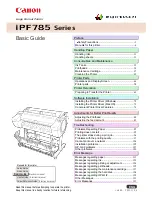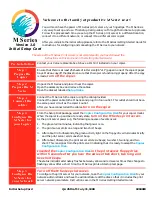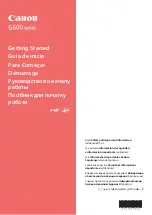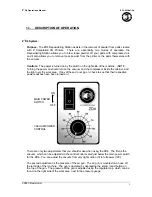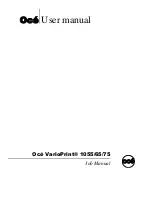
Adjusting the Printer Picture Quality
62
Difference between sel and –
When you print a Guide Print-RGB with each of the
RGB parameters for the center picture set to 0, two
simulation pictures for each RGB parameter (with the
respective parameter set to +3 and –3 and the remaining
two parameters set to 0) are printed around the center
picture. The following explains the meaning of the + and
– symbols.
The R data, G data, and B data that make up the picture
data are digitized values representing the strength of
light of each color. The + setting is for strengthening the
light of the corresponding color. The – setting is for
weakening the light of the corresponding color. Data
(light) saturation can be obtained with the + setting.
When you need a white background, this feature enables
you to get the desired results without changing the
white.
• Setting in the + direction
When the R parameter is set to +3, for example, the light
of the red component is strengthened, giving the overall
picture a tinge of red. Since the amount of light also
increases at the same time, the brightness of the picture
increases by the corresponding amount.
However, some parts of the picture do not change no
matter how much the light is strengthened. These
include parts of the picture with absolutely no light
components (such as pure green, cyan, and blue parts,
their intermediate colors, and deep black parts), and
parts of the picture with saturated light components
(such as pure magenta, red, and yellow parts, their
intermediate colors, and bright white parts).
• Setting in the – direction
When the R parameter is set to –3, for example, the light
of the red component is weakened, giving the overall
picture a tinge of cyan (the complementary color of red).
Since the amount of light also decreases at the same
time, the darkness of the picture increases by the
corresponding amount.
This setting differs from the + setting in that a tinge of
cyan is added to parts in which light components are
saturated such as parts of pure reddish-purple
(magenta), red, and yellow or their intermediate colors
and bright white. This occurs especially in cases where
the background is white or the subject is wearing white
clothes.
Specific example 1: Removing yellow
To remove yellow from the subject, we recommend
setting the B parameter to a + value in the Guide Print-
RGB.
Specific example 2: Adding yellow
To add yellow to the subject, we recommend setting the
B parameter to a – value in the Guide Print-RGB.
However, you need to understand that the concept of
weakening the light involves adding a tinge of yellow to
white parts. To avoid this, set a plus value for the L
parameter that is equivalent to the minus value set for B
parameter. This has the same effect as setting plus values
for the R and G parameters without changing the B
parameter. The point to note here is that the overall
brightness increases.
Printing Times
Print times differ depending on the print size and paper
size used.
Printing times
The following are examples of the approximate time it
takes from the moment the
/
button is pressed on
the camera to the moment the printer receives the picture
data from the camera and prints one picture.
* With the UPC-X45 series, print size changes to 120 × 97.5 mm
(4-3/4 × 3-7/8").
paper
Resolu-
tion
Print size 1
(151 ×
101.6 mm,
6 × 4")
*
Print size 4
(80 ×
60 mm,
3-1/4 ×
2-3/8")
Print size 10
(47 ×
37 mm,
1-7/8 ×
1-1/2")
UPC-X34
series
STD-ID
Not
available
Approx.
80 sec
Approx.
75 sec
HIGH-ID Not
available
Approx.
82 sec
Approx.
76 sec
UPC-X45
series
STD-ID
Approx.
180 sec
Approx.
105 sec
Approx.
101 sec
HIGH-ID Approx.
181 sec
Approx.
105 sec
Approx.
102 sec
UPC-X46
series
STD-ID
Approx.
138 sec
Approx.
120 sec
Approx.
120 sec
HIGH-ID Approx.
141 sec
Approx.
122 sec
Approx.
116 sec
Summary of Contents for UPX-C100
Page 77: ...Sony Corporation ...































